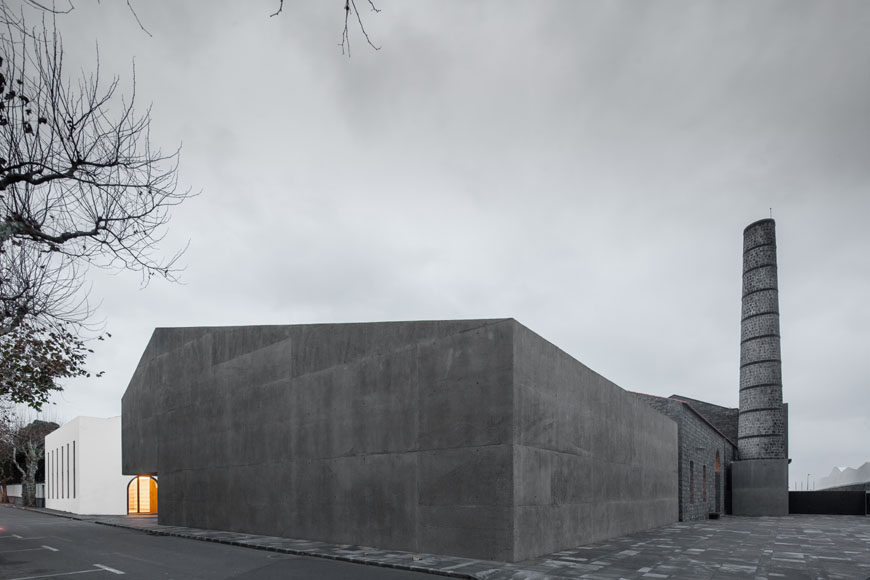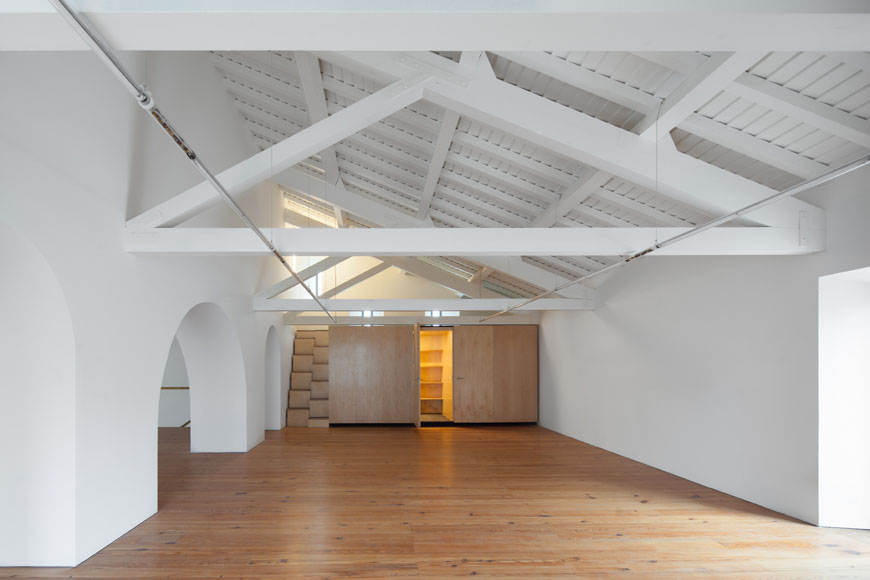Arquipélago Contemporary Arts Center – Azores
Região Autónoma dos Açores, Portugal
Phone: +351 296 470 130
Website: http://arquipelagocentrodeartes.azores.gov.pt/en/

The Arquipélago Center for Contemporary Arts is the leading art museum and exhibition center in the Azores.
The center is housed in a late-19th-century former alcohol factory, located in the town of Ribeira Grande on São Miguel Island, the largest island in the archipelago of the Azores.
The building complex was converted into an art center in 2009, after an award-winning design by the Portuguese architects Menos é Mais Arquitectos Associados and João Mendes Ribeiro.
Arquipélago is an interdisciplinary center dedicated to promoting contemporary visual arts, performing arts, and architecture by means of temporary exhibitions, residential courses, workshops, conferences, concerts, and special events. The center is especially focused on arts from Portuguese-speaking countries, also through connections and collaborations with international institutions, and is currently building up its own permanent collection of 21st-century art.
Along with exhibition spaces, Arquipélago contains a documentation center, an auditorium theater, educational rooms, workshops, and a cafe. The center is fully accessible to people with disabilities.

Arquipélago Contemporary Arts Center; photo © José Campos.
The architecture of the Archipelago Center for Contemporary Arts by Menos é Mais Arquitectos Associados + João Mendes Ribeiro
The Azores are historically a gateway, not only geographically but also conceptually, between Europe and the Americas; a group of volcanic islands, stuck in the middle of the Atlantic and separated by 900 kilometers of water from the closest land, Madeira, and characterized by a fascinating combination of nature and human-shaped landscape.
The Archipelago Center for Contemporary Arts has been conceived to become the reference contemporary art venue for the 9 islands that form the archipelago, as well as an institution aimed to ideally connect through art both sides of the Atlantic as well as the Azores with the mainland. Similarly, the multidisciplinary activity of the center combines various forms of 21st-century creativity and art, including visual arts, architecture, and performing arts.
Architectural model of the center, photo © Menos é Mais Arquitectos Associados
The Archipelago Center is housed in a former industrial plant, once producing alcohol from sweet potatoes and sugar beets. The fascinating and somehow monumental architecture of the complex, dating back to the late 19th century and mostly made of volcanic stone and timber, is the background of this excellent regeneration project by Porto-based Menos é Mais Arquitectos Associados and Coimbra architect João Mendes Ribeiro.
The project involved both the refurbishment of the older structures and the realization of two new buildings, devised to accommodate functions that are not compatible with the preexisting industrial constructions.
The functional program included various exhibition spaces, workshops, a multifunctional space-auditorium, educational and meeting rooms, administration offices, a library, and a cafe, along with an open-air courtyard suitable for performances and special events.
Top and bottom © Menos é Mais Arquitectos Associados; middle © José Campos.
To create a coherent combination of old and new architecture, Francisco Vieira de Campos, Cristina Guedes, and João Mendes Ribeiro conceived forms and materials to obtain a historically respectful yet dynamic and contemporary ensemble, where the 19th-century architecture in volcanic stone lies side by side with the 21st century one, made of bare concrete with basalt aggregates and which forms recall, yet never mimic, those of the old factory.
photos © José Campos.
The use of locally quarried stone, along with being environmentally respectful, is also traditional of so remote islands, where carrying construction materials from overseas has always been problematic.
Furthermore, the adoption of massive stone walls, providing high thermal inertia, contributes to reducing the carbon footprint of the center, in combination with passive solar energy and rainwater collecting solutions.
Photos © José Campos
The various buildings forming the ensemble are arranged around a central plaza, an open-air space that “blurs the frontiers between private and public spheres, leisure and work, art and life” (from the architects’ project description).
photos © José Campos
By adopting a careful and poetic approach to the relationship between old and contemporary, Francisco Vieira de Campos, Cristina Guedes, and João Mendes Ribeiro provided the Center with its identity through that “quiet variation between the preexistence and the two new buildings” that connect different times into a symbolic union of different architectures.
The project for the Archipelago Art Center has been selected as one of the 40 finalists at the European Union Prize for Contemporary Architecture Mies van der Rohe Award
Project data
Competition: 2007 (1st prize)
Project: 2007-2010
Construction: 2011- 2014
Client: Regional Directorate of Culture (DRaC) of the Regional Government of the Azores
Location: Ribeira Grande, São Miguel, Azores, Portugal
Area: 12.914 m² (9.736 m² buildings + 3.178 m² exterior arrangement)
Architecture
Architects: Menos é Mais Arquitectos Associados, Lda., João Mendes Ribeiro Arquitecto Lda.
Authors: Francisco Vieira de Campos, Cristina Guedes, João Mendes Ribeiro.
How our readers rate this museum (you can vote)
copyright Inexhibit 2024 - ISSN: 2283-5474













 (10 votes, average: 4.40 out of 5)
(10 votes, average: 4.40 out of 5)